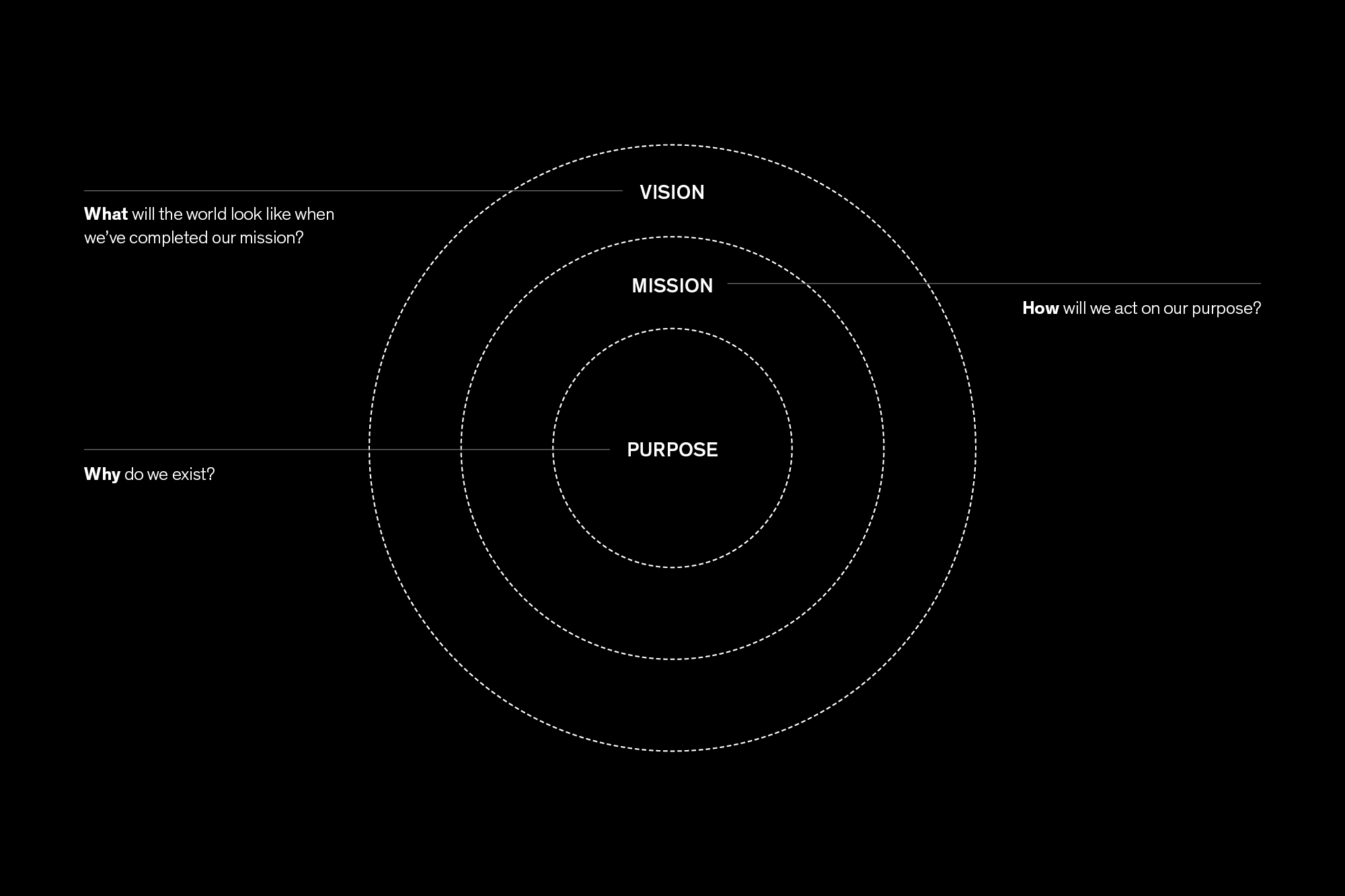
Kahlil Gibran (pictured) once said:
“Work is love made visible. And if you cannot work with love but only with distaste, it is better that you should leave your work... For if you bake bread with indifference, you bake a bitter bread that feeds but half man's hunger.”
I am of Christian Lebanese descent and have revered this man’s profound insights into love, marriage, work, and the human condition for decades. His work has touched the hearts of millions as history's third most widely read poet after Shakespeare and Lao-Tzu. You might ask, however, why I am linking Gibran’s wisdom to the subject of brand purpose.
In these current times of global uncertainty, our reason for existence has never been more in question. Work is what we do most days, and during our time off, we spend the money we earn on products, services, and experiences that bring us closer to the person we want to become. Where we choose to work and spend has become rooted in this search for meaning as to why we exist. Modern brands understand that customers and employees are searching for identity through their offerings, so generic sales messaging and cliché value statements aren’t enough. These days, brands must declare their love and commitment to a purpose bigger than profit. Purpose can no longer be a footnote in fine print; we want to know more about the baker and why he cares about making such good bread.
Most boards in the past did not consider their brand as a subject they should concern themselves about. They failed to see the power of connecting the purpose to their brand. Of course, they dream up taglines and sugar-coated brand purpose statements, but seldom, if ever, sit down and seriously challenge themselves with “Is this really us?”.
Brands should never be about who you are but rather why you are the way you are. Invariably, if you go back in time and look at a company’s heritage when it began, you often find that their original purpose statement is where the seeds of the solutions lie to the problems the company faces today: somehow wandered off course; the seduction of high short-term margins; impatient, voracious shareholders—there could be many reasons.
In my experience, they don’t dig deep enough internally and make up their own minds about why they do what they do. For a long time, brands have been shaped by marketing divisions and external agencies via rose-tinted advertising campaigns that are presented to the C-suite at the 11th hour—with virtually no criteria for evaluation other than to vet for market acceptance. When companies' moral compass wobbles, they are invariably corrected by a life raft of PR spin or, at best, gumboots (i.e. rhetoric) to wade through any adverse weather. I am pleased to say these days are slowly coming to a close.
A person who wears their “heart on their sleeve” is often referred to as being emotionally open, transparent and candid without attempting to disguise their feelings and attitudes. Could this apply to companies? I believe it can, when handled with respectful care and not excessive lyricism. There is an opportunity to reshape many corporate stories to better reflect the world and the part companies wish to play in it. Such purpose-driven stories will resonate and help drive real change. The strategic framework of constructing a cascading narrative from the boardroom to the boardwalk is becoming an exciting opportunity and success factor for brands as customers look for greater transparency and authenticity in their buying preferences.
I’m not suggesting that every brand adopt evangelical values. However, in describing the backdrop to their offering, corporate leaders need to pay greater attention to why they are doing something a certain way, explaining their purpose and the social good they are endeavouring to deliver beyond corporate returns.

Boards need to be involved, and this begins with peeling their onion and searching for the “Why” factor. Taking time inside the board to consider the company’s purpose and how it should drive their decisions is a necessity on the path to greater authenticity. You will likely be creating a transition story of redemption with three components:
A sense of connection to the past: that your DNA is still alive and well.
A sense of continuity: that the things you value will continue
A sense of direction: where you are going in the future.
Refreshing your brand with your purpose is easier if you are small with little baggage of the past. Shifting perceptions for a larger company with entrenched viewpoints is much harder. You have to believe sincerely and with optimism that you can make things better and create transformative change in your category whilst remaining economically viable. Companies who have turned the corner and are all already on a new journey are being held to higher regard in their effort to be more socially conscious businesses. Bigger companies are beginning to see this. Major C-suite and board commitments are moving these companies from an understated purpose to putting purpose first.
It is all very good and well to define a purpose for your company, but it's another thing to embed purpose throughout your organisation. A recent observation by McKinsey & Company reported that 85% of executives and upper management said they are living their purpose at work; however, only 15% of frontline managers and frontline employees agreed. Galvanising any culture begins with defining one’s purpose, mission, and vision in such a way that can be commonly understood and acted upon across every part of an organisation, not just the top. For example, challenging a food company to shift to nutrition—focusing the ‘Why’ on people’s health as an outcome—is likely to send the shivers down a product development team that has been hellbent on delivering KPIs for volume and sales. You need to bring them along and involve them in the journey to redefine your brand.
The most important factor is authenticity. No one wants you to be holier than thou, given the hyper-sensitivity to massive green and carewashing that has gone on. Ambiguous, cliché purpose statements that don’t accurately represent the reality of your company will do more harm than good. Everyone along the value chain needs to feel they can contribute to the purpose. This should be a core part of the HR mandate. An internal culture that is unified behind a clear purpose at grassroots level will result in a passionate, driven and resilient brand.
In my experience, medium to large companies should expect a 3 to 5-year horizon in achieving this transition. The courage and commitment is essential in that there could be significant reforms and redesign of products and services—which invariably have to come out of cash flow. This work is not for the faint-hearted and you need the optimism and confidence of Mohammed Ali to succeed.
What could this mean for your customers, your employees, your shareholders and how closely does it align with your existing service or product offer?
A purpose-driven brand at its best will win people’s loyalty, become a cultural icon, and affect people’s lives for the better. Combining purpose with customer appeal and giving back to people and the planet is the journey brands need to go on. High expectations, granted, but those that do will thrive for many years to come as the pathfinders of their respective industries.
I do believe that shaping one’s purpose and describing your specific reason why, when done thoroughly, will attract you to do business with people who believe what you believe. It’s valuable for your psychological premium: the additional value that consumers perceive and are willing to pay for due to their emotional connection to your brand. You should forget trying to satisfy everybody who needs what you have as the non-believers will want your product for less, which your offer can ill afford.
I have always been unashamedly commercial and believe that profit creates the opportunity to do greater good. Financial success with a social conscience carries greater credibility, allowing one to influence the actions of others. Smart, successful companies are rapidly revising their corporate missions with intentions that are bigger than making profits. And I do think that in making meaning, you will make money. Having a social conscience whilst generating profits is not incompatible with the right product offering.
A purpose-driven brand culture is the best competitive advantage you will ever find in a world where business models are very similar. It can be a major distinguishing factor between ordinary results and spectacular ones. Companies I have observed win magnificently when they invest time in embedding their purpose, mission, and vision. Their passions are ignited when they set out to advance a cause greater than themselves.

In an industry notorious for CO2 emissions and significant waste, Hilti, a global leader in providing innovative tools, technology, software, and services for the commercial construction industry, stands out with its strong commitment to purpose-led branding. Evolving from a signature toolbox to a multifaceted global business, the brand is built on a tradition of quality, care, and dedication to its values that permeate every aspect of the company.
Recognisable worldwide by its distinctive red and white visuals, Hilti has undergone a comprehensive brand repositioning over the past decade, transforming its purpose from a sales-driven organisation to delivering comprehensive construction solutions that set a new standard for sustainability in the industry. Investing around 7% of sales annually in research and development, Hilti stands for innovation, customer partnerships, and delivering a zero-carbon future.
No longer the hero, but the guide in their customers' journey, Hilti has consistently invested in and governed its brand with customers at the core. Hilti engages customers through heartfelt storytelling and solution-based approaches, leveraging their deep understanding of construction trades to build a global brand tribe. Hilti estimates 280,000 customer contacts daily, drawing many ideas directly from customers facing construction challenges. Digital marketing and in-person demonstrations are crucial to connect with tradespeople and anticipate coming needs.
Despite the sector facing enormous criticism, Hilti is dedicated to achieving a zero-carbon target by 2050. Thanks to robust partnerships with their sub-trades and suppliers, they are confident in their ability to reach this goal, having already met internal carbon neutrality targets in 2023. This commitment enhances both internal operations and external brand perception.
“You’ve got to think about big things while you’re doing small things, so that all the small things go in the right direction.” – Alvin Toffler Writer, futurist and businessman
Capture my head with the soundness of your product and my heart by doing the right thing beyond the hard sell.
Discover your new raison d’être, your why, and communicate your transformation story with absolute clarity to all of your audiences, whose help you need along your transformation journey.
From your boardroom to the front gate, together with your customer communities beyond, if you listen carefully to them, they will all contribute to and shape the brand’s purpose. This is a perpetual process of freshness—it’s unbeatable.
Is your brand offering directly connected to the purpose, mission and vision of the business?
When did you last visit the DNA of your company? Is its definition still current?
Does your senior leadership team own and fully understand your purpose, mission and vision?
How embedded is your purpose throughout the company? Does everyone understand what it really means? Is it easily understood and acted on throughout the business?
Is your brand purpose, mission and vision well communicated internally and externally?
by Brian Richards
27th June 2024





